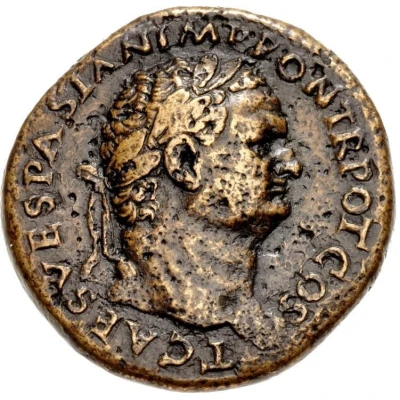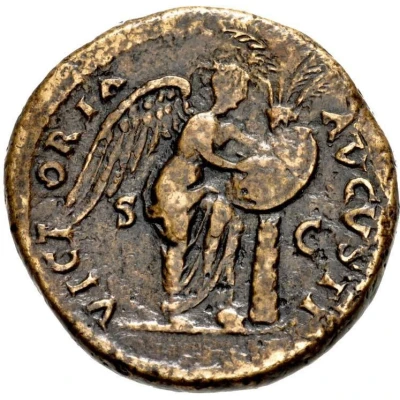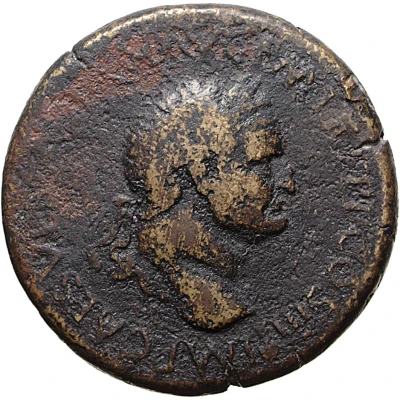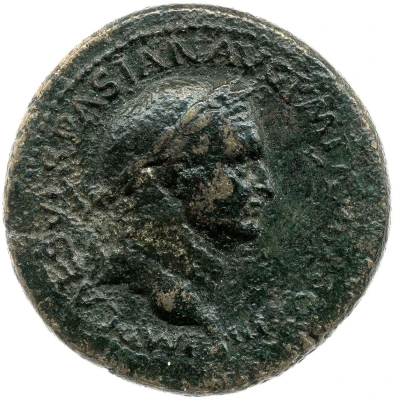
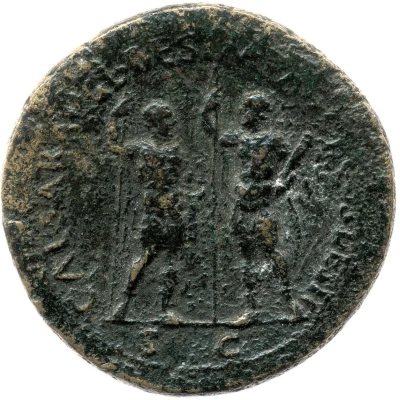

© Trustees of the British Museum
Sestertius - Vespasian, Titus, and Domitian CAESAR AVG F DES IMP AVG F COS DES II S C
71 year| Bronze | 25.1 g | - |
| Issuer | Rome › Roman Empire (27 BC - 395 AD) |
|---|---|
| Emperor | Vespasian (Titus Flavius Vespasianus) (69-79) |
| Type | Standard circulation coin |
| Year | 71 |
| Value | 1 Sestertius = ¼ Denarius |
| Currency | Denarius, Reform of Augustus (27 BC – AD 215) |
| Composition | Bronze |
| Weight | 25.1 g |
| Shape | Round (irregular) |
| Technique | Hammered |
| Demonetized | Yes |
| Updated | 2024-10-06 |
| Numista | N#250048 |
|---|---|
| Rarity index | 97% |
Reverse
Titus and Domitian standing front, both holding spear and parazonium.
Script: Latin
Lettering: CAESAR AVG F DES IMP AVG F COS DES II S C
Translation:
Caesar Augusti Filius, Designatus, Imperator Augusti Filius, Consul Designatus Secundum, Senatus Consultum.
Caesar, son of the emperor (Augustus), [consul] elect. Supreme commander (Imperator), son of the emperor (Augustus), consul elect for the second time. Decree of the senate.
Comment
Source: Online Coins of the Roman Empire (OCRE)Interesting fact
One interesting fact about this coin is that it features a rare combination of three emperors on its reverse side - Vespasian, Titus, and Domitian. This type of coin is known as a "family coin" and was issued during a time when the Roman Empire was ruled by a dynasty of emperors, known as the Flavian dynasty. The coin's design was meant to promote the image of a united and powerful imperial family, and it is a unique example of Roman numismatic art.
